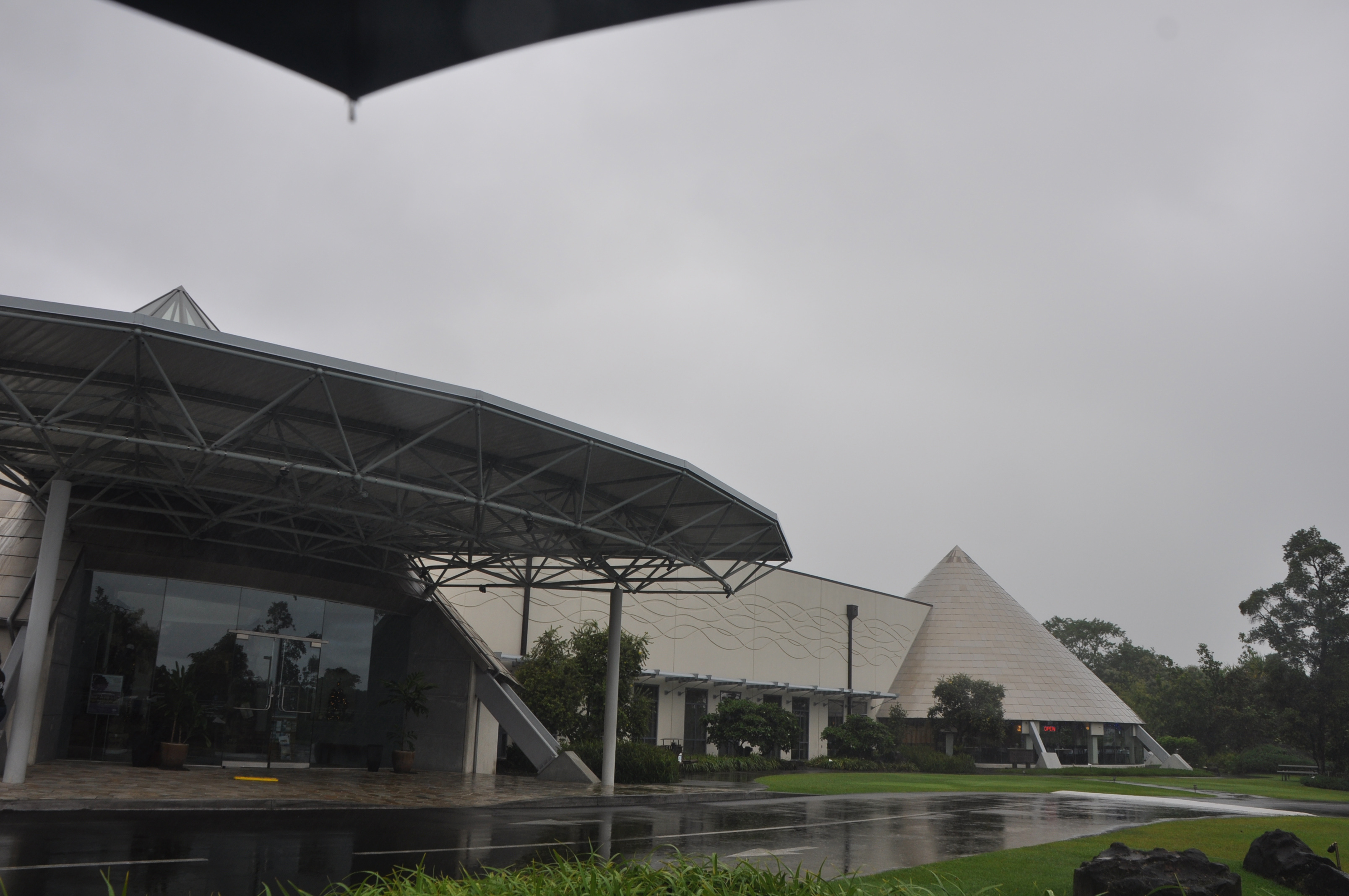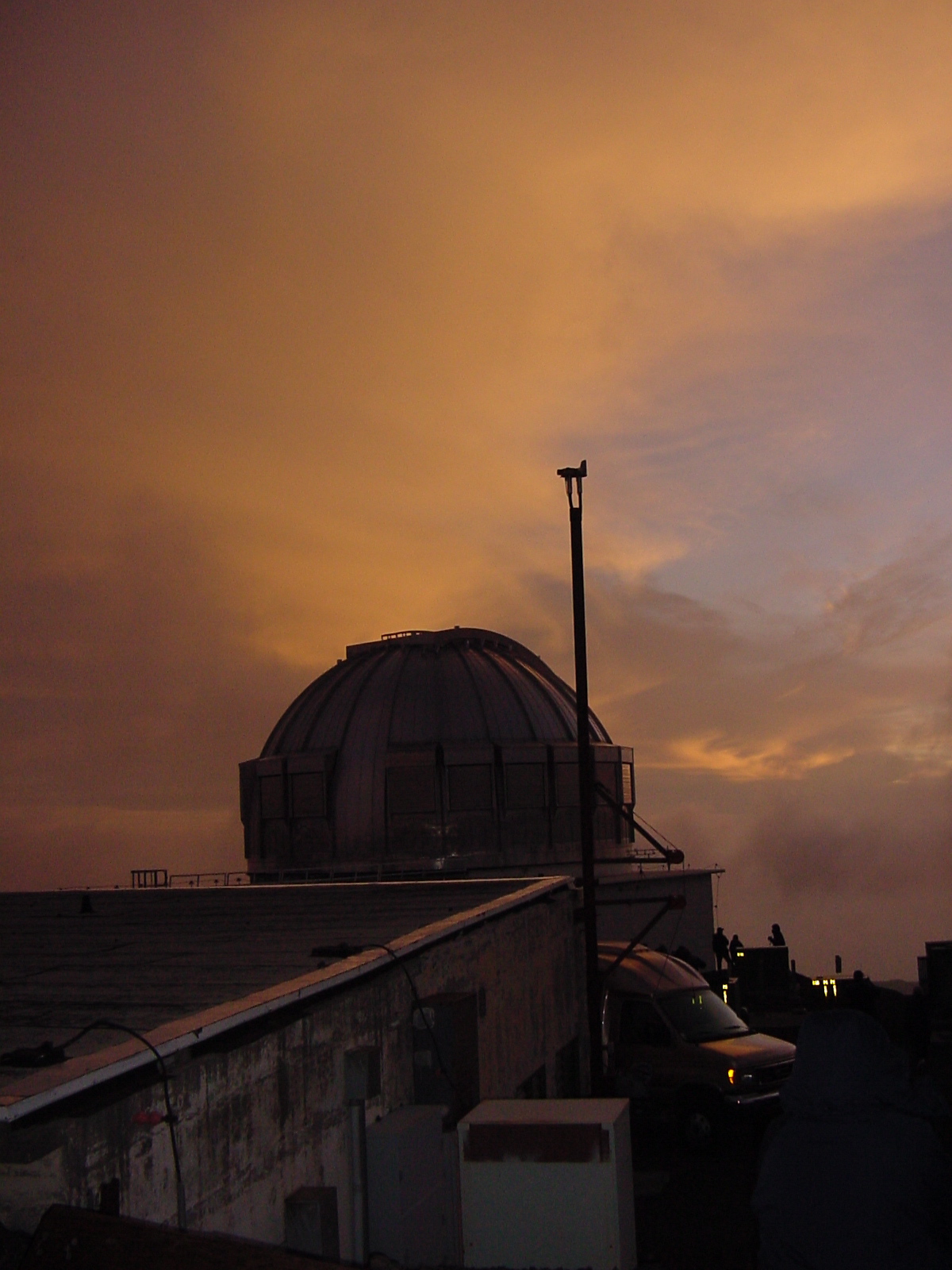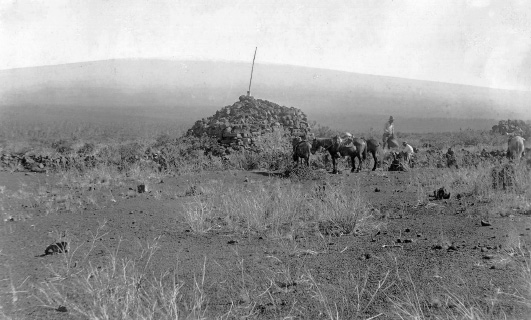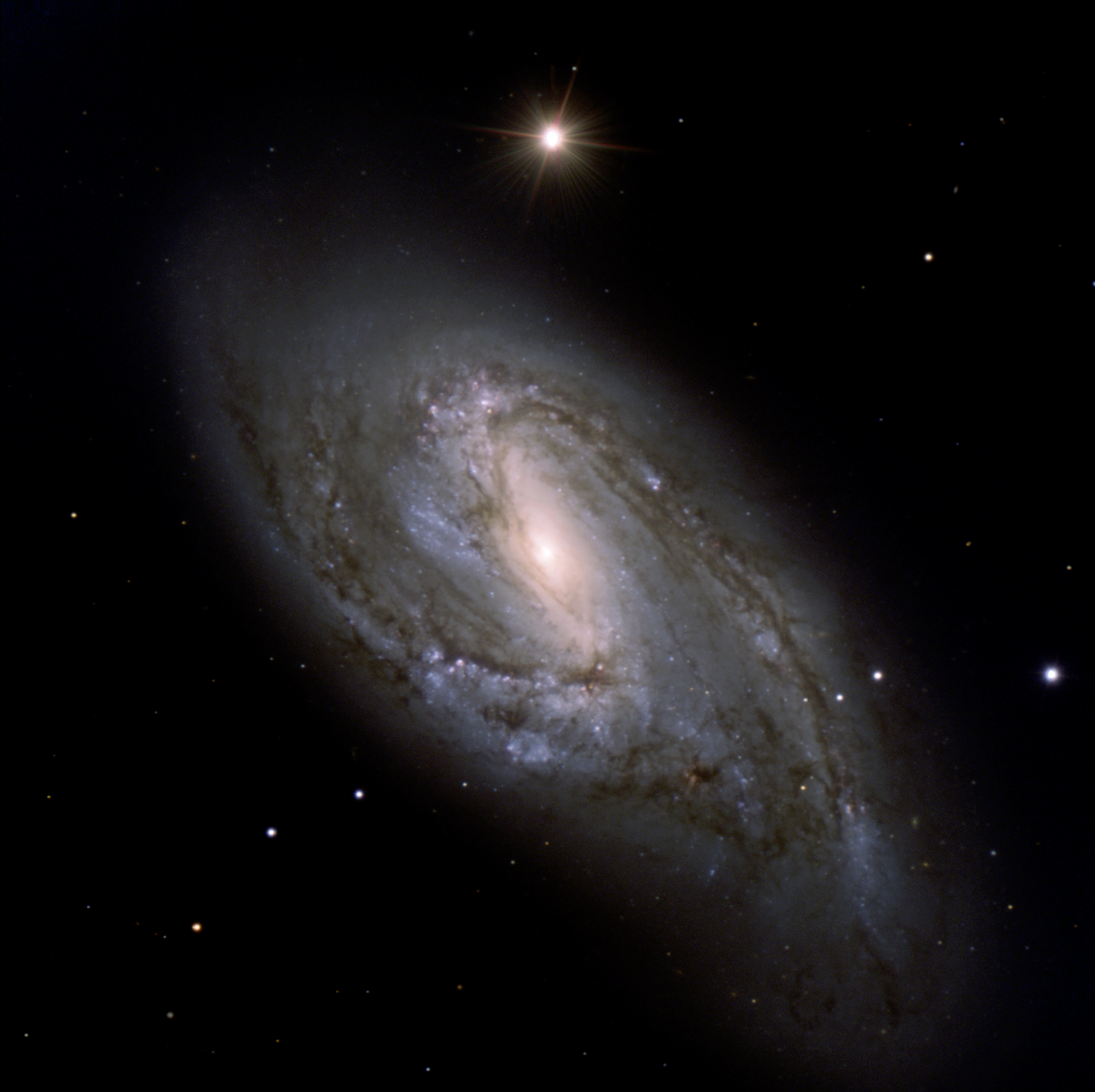|
Pōniuāʻena
Pōniuāʻena (), also named J100758.264+211529.207 or J1007+2115, is the third most-distant quasar known, with a measured redshift of ''z'' = 7.515 or a lookback time of 13.02 billion years. Its 1.5 billion–solar mass black hole is the most distant known black hole with a mass of over one billion solar masses, and models indicate that it must have formed not later than 100 million years after the Big Bang, before reionization. Its discovery was announced in June 2020. Only the quasars ULAS J1342+0928 (''z'' = 7.54) and J0313–1806 (''z'' = 7.64) are known to be more distant. The quasar was primarily observed at the Mauna Kea Observatories on the Hawaii (island), island of Hawaii; it was first discovered at the Gemini Observatory and was further identified using data from the W. M. Keck Observatory, United Kingdom Infrared Telescope, UKIRT, Magellan Telescopes, and Atacama Large Millimeter Array, ALMA. Hawaiian language experts at ʻImiloa Astronomy Center gave it the name ''P� ... [...More Info...] [...Related Items...] OR: [Wikipedia] [Google] [Baidu] |
ʻImiloa Astronomy Center
ʻImiloa Astronomy Center is an astronomy and culture education center located in Hilo, Hawaii. Conceived by founding Director George Jacob in 2001, it features exhibits and shows dealing with Native Hawaiians, Hawaiian culture and history, astronomy (particularly at the Mauna Kea Observatories), and the overlap between the two. ʻImiloa includes a 120-seat planetarium, which features a fulldome video projection system. Planetarium presentations include ʻImiloa's exclusive signature show, "Maunakea: Between Earth and Sky." The bilingual exhibits (in Hawaiian and English) offer two views of Origins and Voyages, presenting the tools, visions and discoveries of the astronomers and the Polynesian voyagers (see Polynesian navigation), the first group of whom are thought to have voyaged to Hawaii from the Marquesas Islands. Visitors to ʻImiloa will leave with a new understanding of the early Polynesians, who used the stars to find these isolated islands in the middle of the vast P ... [...More Info...] [...Related Items...] OR: [Wikipedia] [Google] [Baidu] |
J2000
In astronomy, an epoch or reference epoch is a moment in time used as a reference point for some time-varying astronomical quantity. It is useful for the celestial coordinates or orbital elements of a celestial body, as they are subject to perturbations and vary with time. These time-varying astronomical quantities might include, for example, the mean longitude or mean anomaly of a body, the node of its orbit relative to a reference plane, the direction of the apogee or aphelion of its orbit, or the size of the major axis of its orbit. The main use of astronomical quantities specified in this way is to calculate other relevant parameters of motion, in order to predict future positions and velocities. The applied tools of the disciplines of celestial mechanics or its subfield orbital mechanics (for predicting orbital paths and positions for bodies in motion under the gravitational effects of other bodies) can be used to generate an ephemeris, a table of values giving ... [...More Info...] [...Related Items...] OR: [Wikipedia] [Google] [Baidu] |
Mauna Kea Observatories
The Mauna Kea Observatories (MKO) are a group of independent astronomical research facilities and large telescope observatories that are located at the summit of Mauna Kea on Hawaii (island), Hawaiʻi, United States. The facilities are located in a 525-acre (212 ha) special land use zone known as the "Astronomy Precinct", which is located within the 11,228-acre (4,544 ha) Mauna Kea Science Reserve. The Astronomy Precinct was established in 1967 and is located on land protected by the National Historic Preservation Act of 1966, Historical Preservation Act for its significance to Hawaiian culture. The presence and continued construction of telescopes Opposition to the Mauna Kea Observatories, is highly controversial due to Mauna Kea's centrality in native Hawaiian religion and culture, as well as for a variety of environmental reasons. The location is near ideal because of its light pollution, dark skies from lack of light pollution, good astronomical seeing, low Relative ... [...More Info...] [...Related Items...] OR: [Wikipedia] [Google] [Baidu] |
Quasars
A quasar ( ) is an extremely Luminosity, luminous active galactic nucleus (AGN). It is sometimes known as a quasi-stellar object, abbreviated QSO. The emission from an AGN is powered by accretion onto a supermassive black hole with a mass ranging from millions to tens of billions of solar masses, surrounded by a gaseous Accretion disk, accretion disc. Gas in the disc falling towards the black hole heats up and releases energy in the form of electromagnetic radiation. The radiant energy of quasars is enormous; the most powerful quasars have luminosity, luminosities thousands of times greater than that of a galaxy such as the Milky Way. Quasars are usually categorized as a subclass of the more general category of AGN. The redshifts of quasars are of Expansion of the universe, cosmological origin. The term originated as a Contraction (grammar), contraction of "quasi-stellar ''[star-like]'' radio source"—because they were first identified during the 1950s as sources of radio-wave ... [...More Info...] [...Related Items...] OR: [Wikipedia] [Google] [Baidu] |
Hawaiian Language
Hawaiian (', ) is a critically endangered Polynesian language of the Austronesian language family, originating in and native to the Hawaiian Islands. It is the native language of the Hawaiian people. Hawaiian, along with English, is an official language of the U.S. state of Hawaii. King Kamehameha III established the first Hawaiian-language constitution in 1839 and 1840. In 1896, the Republic of Hawaii passed Act 57, an English-only law which subsequently banned Hawaiian language as the medium of instruction in publicly funded schools and promoted strict physical punishment for children caught speaking the Hawaiian language in schools. The Hawaiian language was not again allowed to be used as a medium of instruction in Hawaii's public schools until 1987, a span of 91 years. The number of native speakers of Hawaiian gradually decreased during the period from the 1830s to the 1950s. English essentially displaced Hawaiian on six of seven inhabited islands. In 2001, native ... [...More Info...] [...Related Items...] OR: [Wikipedia] [Google] [Baidu] |
Atacama Large Millimeter Array
The Atacama Large Millimeter/submillimeter Array (ALMA) is an astronomical interferometer of 66 radio telescopes in the Atacama Desert of northern Chile, which observe electromagnetic radiation at millimeter and submillimeter wavelengths. The array has been constructed on the elevation Chajnantor plateau – near the Llano de Chajnantor Observatory and the Atacama Pathfinder Experiment. This location was chosen for its high elevation and low humidity, factors which are crucial to reduce noise and decrease signal attenuation due to Earth's atmosphere. ALMA provides insight on star birth during the early Stelliferous era and detailed imaging of local star and planet formation. ALMA is an international partnership amongst Europe, the United States, Canada, Japan, South Korea, Taiwan, and Chile. Costing about US$1.4 billion, it is the most expensive ground-based telescope in operation. ALMA began scientific observations in the second half of 2011 and the first images were rel ... [...More Info...] [...Related Items...] OR: [Wikipedia] [Google] [Baidu] |
Magellan Telescopes
The Magellan Telescopes are a pair of optical telescopes located at Las Campanas Observatory in Chile. The two telescopes are named after the astronomer Walter Baade and the philanthropist Landon T. Clay. First light for the telescopes was on September 15, 2000 for the Baade, and September 7, 2002 for the Clay. A consortium consisting of the Carnegie Institution for Science, University of Arizona, Harvard University, the University of Michigan and the Massachusetts Institute of Technology built and operate the twin telescopes. The telescopes were named after the sixteenth-century Portuguese explorer Ferdinand Magellan. The Giant Magellan Telescope (GMT) is an extremely large telescope under construction, as part of the US Extremely Large Telescope Program. Current instruments on the Magellan Telescopes Baade telescope: * Inamori Magellan Areal Camera and Spectrograph (IMACS) * FourStar * Folded port InfraRed Echellette (FIRE) * Magellan Echellete (MagE) Clay telescope: ... [...More Info...] [...Related Items...] OR: [Wikipedia] [Google] [Baidu] |
United Kingdom Infrared Telescope
The United Kingdom Infra-Red Telescope (UKIRT) is a 3.8 metre (150 inch) infrared reflecting telescope, the second largest dedicated infrared (1 to 30 micrometres) telescope in the world. It is located on Mauna Kea, Hawai'i as part of Mauna Kea Observatory. Until 2014 it was operated by the Joint Astronomy Centre in Hilo. It was owned by the United Kingdom Science and Technology Facilities Council. UKIRT is currently being funded by NASA and operated under scientific cooperation between Lockheed Martin Advanced Technology Center, the University of Hawaii, and the U. S. Naval Observatory. The telescope is set to be decommissioned after completion of the Thirty Meter Telescope as part of the Mauna Kea Comprehensive Management Plan. Design Like related telescopes on Tenerife, it is a Cassegrain device with a thin primary mirror, around 2/3 thinner than in other contemporary devices and weighing only 6.5 tonnes. When trying to view distant objects in infra-red local sources of ... [...More Info...] [...Related Items...] OR: [Wikipedia] [Google] [Baidu] |
Gemini Observatory
The Gemini Observatory comprises two 8.1-metre (26.6 ft) telescopes, Gemini North and Gemini South, situated in Hawaii and Chile, respectively. These twin telescopes offer extensive coverage of the northern and southern skies and rank among the most advanced optical/infrared astronomy, infrared telescopes available to astronomers. ''(See List of largest optical reflecting telescopes)''. The observatory is owned and operated by the National Science Foundation (NSF) of the United States, the National Research Council Canada, National Research Council of Canada, CONICYT of Chile, MCTI of Brazil, MCTIP of Argentina, and Korea Astronomy and Space Science Institute, Korea Astronomy and Space Science Institute (KASI) of Republic of Korea. The NSF is the primary funding contributor, providing about 70% of the required resources. The Association of Universities for Research in Astronomy (AURA) manages the operations and maintenance of the observatory through a cooperative agreement wi ... [...More Info...] [...Related Items...] OR: [Wikipedia] [Google] [Baidu] |
Hawaii (island)
Hawaii is the List of islands of the United States by area, largest island in the United States, located in the Hawaii, state of Hawaii, the southernmost state in the union. It is the southeasternmost of the Hawaiian Islands, a chain of volcanic islands in the Pacific Ocean, North Pacific Ocean. With an area of , it has 63% of the Hawaiian archipelago's combined landmass. However, it has only 13% of the archipelago's population. The island of Hawaii is the third largest island in Polynesia, behind the North Island, North and South Islands of New Zealand. The island is often referred to as the Island of Hawaii or Hawaii Island to distinguish it from the state. It is also referred to as The Big Island, due to its size relative to the other islands. In Hawaiian language, Hawaiian, the island is sometimes called ''Moku o Keawe''. The word ''keawe'' has several meanings. One definition, "southern cross", is said to be the name of an ancient chief. Another definition is "the bearer". ... [...More Info...] [...Related Items...] OR: [Wikipedia] [Google] [Baidu] |
Science News
''Science News'' (''SN'') is an American monthly magazine devoted to articles about new scientific and technical developments, typically gleaned from recent scientific and technical journals. The periodical has been described as having a scope across "all sciences" and as having "up to date" coverage. History ''Science News'' has been published since 1922 by the Society for Science & the Public, a non-profit organization founded by E. W. Scripps in 1920. American chemist Edwin Slosson served as the publication's first editor. From 1922 to 1966, it was called ''Science News Letter''. The title was changed to ''Science News'' with the March 12, 1966, issue (vol. 89, no. 11). Tom Siegfried was the editor from 2007 to 2012. In 2012, Siegfried stepped down, and Eva Emerson became the Editor in Chief of the magazine. In 2017, Eva Emerson stepped down to become the editor of a new digital magazine, ''Annual Reviews''. On February 1, 2018, Nancy Shute became the Editor in Chief of ... [...More Info...] [...Related Items...] OR: [Wikipedia] [Google] [Baidu] |
Leo (constellation)
Leo is one of the constellations of the zodiac, between Cancer (constellation), Cancer the crab to the west and Virgo (constellation), Virgo the maiden to the east. It is located in the Northern celestial hemisphere. Its name is Latin for lion, and to the ancient Greeks represented the Nemean Lion killed by the mythical Greek hero Heracles as one of his Twelve Labours, twelve labors. Its old astronomical symbol is (♌︎). One of the 48 constellations described by the 2nd-century astronomer Ptolemy, Leo remains one of the 88 modern constellations today, and one of the most easily recognizable due to its many bright stars and a distinctive shape that is reminiscent of the crouching lion it depicts. Features Stars Leo contains many bright stars, many of which were individually identified by the ancients. There are nine bright stars that can be easily seen with the naked eye, four of the nine stars are either first or second magnitude which render this constellation especially ... [...More Info...] [...Related Items...] OR: [Wikipedia] [Google] [Baidu] |








